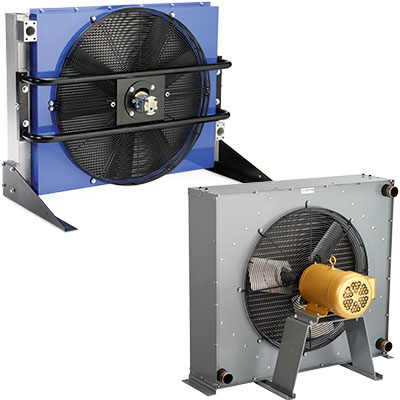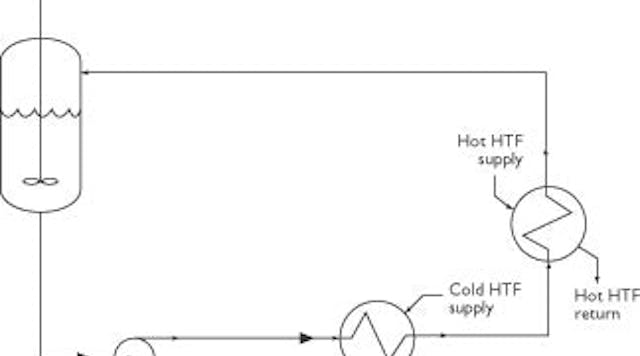Advancements in Heat Transfer Equipments: What You Required to Know for Ideal Efficiency
Advancements in Heat transfer systems are changing performance throughout different sectors. Advanced materials like graphene and nanofluids guarantee considerable improvements in thermal conductivity. The assimilation of IoT and machine discovering offers opportunities for real-time surveillance and enhanced energy performance. The landscape of thermal management is quickly developing. Understanding these developments is necessary for accomplishing perfect system efficiency and sustainability in the future. What certain innovations are forming this makeover?
Emerging Materials for Improved Heat Transfer

Advanced Heat Exchanger Styles
While conventional Heat exchangers have offered their function in various applications, progressed layouts are currently emerging to meet the boosting demands for effectiveness and efficiency. These cutting-edge layouts, such as plate, shell-and-tube, and finned-tube Heat exchangers, include boosted surface area locations and improved flow patterns to boost thermal transfer prices. Additionally, compact styles permit for minimized room needs without jeopardizing performance. Advanced products, such as composites and corrosion-resistant alloys, in addition improve longevity and performance under severe problems. Moreover, simulation innovations and computational liquid characteristics are significantly employed to refine these designs, making sure peak Heat transfer qualities. As sectors seek to decrease energy consumption and optimize outcome, the fostering of advanced Heat exchanger styles is essential in accomplishing these purposes.
The Role of Nanotechnology in Heat Transfer
Nanotechnology plays an essential function in enhancing thermal conductivity within Heat transfer systems. By controling products at the nanoscale, scientists have achieved substantial enhancements in energy effectiveness. These developments not just enhance efficiency however also add to even more sustainable energy options.
Enhanced Thermal Conductivity
Significant advancements in thermal conductivity have arised via the application of nanotechnology, changing Heat transfer systems throughout various markets. By including nanoparticles right into Heat transfer liquids and products, researchers have accomplished remarkable boosts in thermal conductivity. These nanoparticles, such as carbon nanotubes, graphene, and metal oxides, enhance the Heat transfer properties because of their high area and special thermal attributes. The resulting compounds show enhanced performance in applications varying from electronics cooling down systems to renewable resource technologies. Additionally, the capability to customize the dimension, shape, and make-up of nanoparticles allows for optimized thermal administration options. Consequently, nanotechnology remains to play a crucial duty in the growth of extra reliable and efficient Heat transfer systems, paving the method for boosted commercial applications.
Energy Effectiveness Improvements

Assimilation of IoT in Heat Transfer Equipments
The assimilation of IoT in Heat transfer systems presents the execution of smart sensors that boost functional performance. These sensors enable real-time information monitoring, enabling immediate changes and optimizations. This technical improvement has the potential to considerably boost performance and energy management in Heat transfer applications.
Smart Sensors Application
As Heat transfer systems evolve, the assimilation of wise sensors with the Web of Points (IoT) has actually emerged as a transformative method. These sensing units enable real-time surveillance of stress, flow, and temperature level prices, improving system efficiency and integrity. By accumulating and transmitting data, they facilitate proactive upkeep, minimizing the threat of system failures. Additionally, clever sensors contribute to energy savings by refining operational criteria based on ecological problems. Their capability to assess fads and abnormalities permits informed decision-making, ensuring peak performance of Heat transfer systems. As my blog industries progressively adopt this modern technology, the application of clever sensing units stands to transform how Heat transfer systems are taken care of, leading the way for greater sustainability and improved efficiency end results.
Real-Time Information Monitoring
Exactly how can real-time data keeping an eye on improve the effectiveness of Heat transfer systems? By integrating Internet of Points (IoT) technology, Heat transfer systems can utilize continuous data collection from smart sensors. This real-time surveillance permits immediate analysis of temperature level, flow, and stress rates, allowing operators to recognize inefficiencies immediately. Adjustments can be made to maximize efficiency, lower power intake, and extend equipment life expectancy. In addition, predictive maintenance can be executed, lessening unanticipated downtime and expensive repairs. The capacity to picture efficiency metrics via control panels improves decision-making, fostering a proactive method to system monitoring. Ultimately, real-time information monitoring not just improves operational effectiveness but also adds to sustainability goals within industrial processes.
Energy Effectiveness and Sustainability Trends
Energy effectiveness and sustainability fads are improving the landscape of Heat transfer systems, driving advancement and compliance throughout numerous markets. Organizations are increasingly prioritizing energy-efficient layouts to decrease functional costs and minimize ecological effects. The assimilation of renewable resource sources is ending up being more prevalent, making it possible for Heat transfer systems to operate sustainably while fulfilling governing needs. In addition, developments in materials and modern technologies advertise reduced energy consumption and improve total performance. Lifecycle analyses are additionally gaining grip, permitting business to review the ecological influence of Heat transfer systems from production to disposal. This concentrate on sustainability not just sustains business duty however additionally placements companies competitively in a market where consumers progressively prefer environment-friendly services. Energy efficiency and sustainability continue to be vital factors to consider for future growths in Heat transfer modern technology.
Developments in Thermal Management Solutions
While the need for efficient Heat transfer remains to climb, developments in thermal monitoring services are emerging to attend to both performance and sustainability challenges. Advanced products, such as phase adjustment materials and nanofluids, are being established to boost Heat transfer performance - DVS Heat Transfer Systems. These materials boost thermal conductivity and permit much better temperature level guideline in various applications. Additionally, modern technologies like energetic thermal control systems are obtaining grip, allowing real-time changes to manage Heat circulation successfully. These systems add to energy savings and minimize the environmental effect of thermal procedures. In addition, the integration of IoT in thermal administration helps with surveillance and predictive maintenance, making certain enhanced efficiency and long life of Heat check transfer systems. Generally, these advancements represent considerable strides toward more lasting thermal monitoring techniques
Future Directions in Heat Transfer Technology
Arising advancements in thermal administration solutions indicate a promising future for Heat transfer modern technology. Scientists are progressively focusing on creating materials with superior thermal conductivity and enhanced energy performance. Technologies such as nanofluids, which consist of put on hold nanoparticles, offer significant enhancements in Heat transfer efficiency. Additionally, the integration of smart products that adapt to differing temperature problems is acquiring grip, enabling more effective and receptive systems. The rise of additive production methods is additionally enabling the layout of complex Heat exchanger geometries that optimize fluid flow. In addition, the execution of maker discovering formulas is prepared for to revolutionize the optimization of Heat transfer systems, helping with predictive upkeep and performance enhancement. Jointly, these developments are poised to change the landscape of Heat transfer innovations in different markets.

Frequently Asked Concerns

Just how Do I Select the Right Heat Transfer System for My Application?
Selecting the ideal Heat transfer system entails assessing application demands, consisting of temperature level ranges, fluid residential properties, and performance demands. Assessing system types, maintenance factors to consider, and cost-effectiveness also plays a necessary duty in making an educated choice.
What Are the Maintenance Demands for Advanced Heat Exchangers?
Maintenance needs for sophisticated Heat exchangers generally include routine inspections, keeping an eye on for leaks, cleaning of surfaces, and guaranteeing perfect circulation rates. Abiding by manufacturer guidelines warranties reliable procedure and extends the devices's life expectancy.
How Do Environmental Aspects Impact Heat Transfer Performance?
Environmental aspects significantly influence Heat transfer effectiveness. Variations in air flow, temperature level, and moisture effect thermal conductivity and convective Heat transfer, inevitably impacting system performance and demanding consideration during the design and procedure of Heat transfer systems.
What Safety And Security Standards Apply to Heat Transfer Solutions?
Security standards for Heat transfer systems usually consist of guidelines from companies such as ASME and ASTM. DVS Heat Transfer Systems. These requirements address products, layout, and functional methods to ensure integrity, efficiency, and defense against dangers in numerous applications
Exactly How Can I Fix Usual Heat Transfer System Issues?
Fixing typical Heat transfer system issues includes examining for leaks, making certain appropriate fluid circulation, inspecting insulation stability, and validating temperature level differentials. Identifying these variables can assist maintain system performance and prevent additional difficulties.
Nanotechnology plays an essential role in improving thermal conductivity within Heat transfer systems. Substantial improvements in thermal conductivity have actually emerged through the application of nanotechnology, revolutionizing Heat transfer systems across different sectors. Advancements in thermal conductivity with nanotechnology have see page paved the way for amazing enhancements in power performance within Heat transfer systems. Power performance and sustainability patterns are reshaping the landscape of Heat transfer systems, driving advancement and compliance throughout different markets. The integration of IoT in thermal management facilitates monitoring and anticipating upkeep, making certain enhanced efficiency and durability of Heat transfer systems.